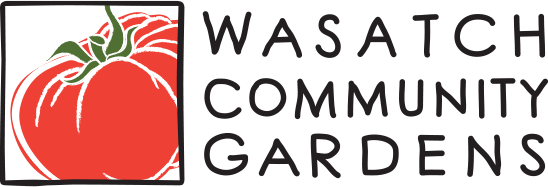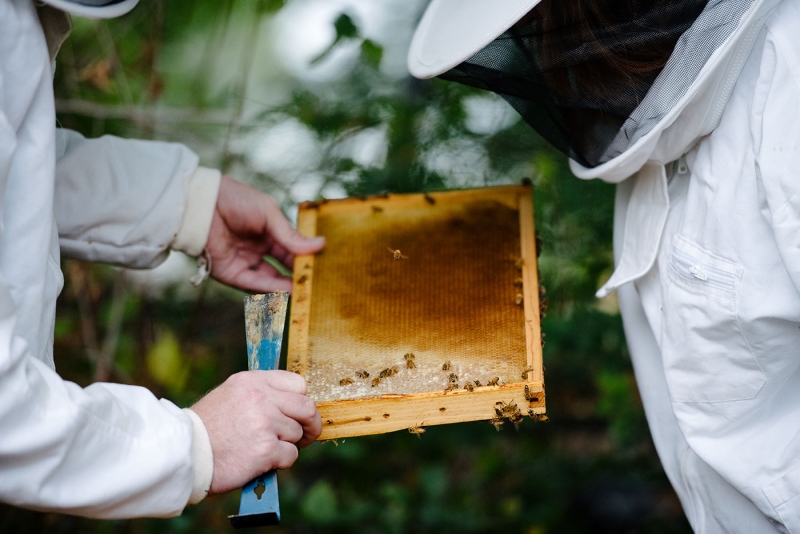Why are pollinators important?
Many of our favorite foods and drinks rely on pollinators to bear their fruit (coffee, tea, cocoa, sugarcane, tomatoes, peaches, apples, strawberries, etc.) and they contribute to healthy plants and a healthy garden ecosystem!
Who are the pollinators?
- Ants - plants pollinated by ants are typically low growing, have small inconspicuous flowers that are close to the stem. (e.g. wild ginger)
- Bees – prefer yellow, blue, & purple flowers and flowers with UV light (e.g. bee balm). Small bees, which have short tongues, prefer packed clusters of tiny flowers (e.g. marigold, daisy, butterfly weed, aromatic herbs).
- Bats – Pollinating bats are typically found in the Southwest. Prefer light-colored, night-blooming flowers with strong odor (many types of cactus).
- Butterflies – prefer red, orange, yellow, pink, blue flowers with flat-topped clusters for landing (e.g., zinnia, calendula, butterfly weed, yarrow, & daisy) in a sunny location. They also need food sources for larvae and places to lay eggs (milkweed, aster, lupine, thistle, fennel, violets, hollyhock, & black-eyed susan).
- Flies – Attracted to green, white, or cream flowers. They have short tongues, so prefer simple, bowl shapes.
- Hummingbirds – prefer red, orange, purple/red tubular flowers with lots of nectar (honeysuckle, sage, fuchsia, jewelweed, fireweed, cardinal flower, bee balm, nasturtium, century plant). No landing areas are needed since they hover while feeding.
- Pollinating Beetles - prefer wide-open flowers (aster, sunflower, rose, & butterfly weed).
- Moths – prefer light-colored flowers that open at dusk such as evening primrose.
Native Bees
There are about 4,000 species of native bees in the U.S. ranging in length from less than one eighth of an inch to more than one inch. Most of these bees are "solitary" nesting and, having no hive to defend (as do non-native honeybees), they are unlikely to sting!
Steps to Attract Pollinators
Plant plenty of nectar and pollen-rich flowers (in patches 3’-4’ in diameter). Choose flowers with a range of shapes and sizes that bloom throughout the season. Bees are color sensitive and attracted to fragrance. Use containers to grow your plants if space is limited (or to bring inside at night when temperatures get cold). Use as many plants native to your region as possible.
- Provide food sources (host plants and feeders) and over-wintering places for eggs and larvae.
- Provide water (small pond, mud puddle or a birdbath).
- Avoid using any pesticides or herbicides. Growing a diverse selection of crops and using native plants will create an ecosystem that regulates pests naturally)
- Provide sites and materials for nesting and over-wintering, and make stick and stake nests for native bees.
- Make a butterfly or hummingbird feeder.
To learn more about the characteristics that attract specific pollinators to a certain flower, please check out the USDA's Pollinator Syndrome Traits Table.
How to Make a Butterfly Feeder
Butterfly nectar is made by boiling 4 parts water with 1 part organic cane sugar. Stir until dissolved, and cool completely before adding it to the feeder. Large batches can be made in advance and stored in the refrigerator for 3 weeks. (This is the same food that is used in hummingbird feeders as well.)
Decorate a glass jar by gluing brightly colored silk or plastic artificial flowers to it or painting bright colors on the outside of it. Waterproof electrical tape in a color that butterflies like (such as red) can also be used to attach artificial flowers. This tape is available in most hardware stores.
Next, punch a small hole in the jar lid by placing it on a piece of wood and hammering a large nail through its center.
Remove the lid, fill the jar with butterfly nectar, and stuff a piece of cotton or a clean sponge into the hole on the inside of the lid. The sponge or cotton should be a tight fit – trim as necessary.
Screw the lid back on tightly, and use wire or twine to hang it upside down (so that the hole faces the ground) in an open, sunny area, ideally near colorful flowers. Butterflies will suck the nectar through the cotton or sponge.
Stick Nests
Stick nests are most easily made from straight lengths of dry, pithy wood. Elderberry, sumac, and chinaberry are all convenient. Branches or twigs are cut 6-8" long for horizontal stick bundles, a foot or more for stake nests. In all cases, one end is drilled to a depth of 4-6" using a sharp twist drill. Useful hole diameters range from 3/16"-7/16" (5-12mm). Pith fragments should be knocked out of the hole. Then, stick nests are bundled together (with wire) and hung horizontally.
Stake Nests
For stake nests, a small notch is cut in the side of the branch, and a pilot
hole drilled into the pith. This will be used by some small body bee species that prefer to excavate the pith themselves. Stake nests are then pushed vertically into the ground.
At the end of the nesting season, stick nests bundles and stake nests can be recovered from the field and stored in a shady place at ambient temperatures. They are easily split to reveal any content of nests (there are likely to be wasp nests too, that had been provisioned with paralyzed spiders or insects).
Nesting Blocks
A drilled length of fire wood is another easy alternative to use at home instead of drilled nesting blocks. Use dry wood and drill across the grain to obtain a smooth hole. The blue orchard bee responds well to this sort of nesting substrate. Face the holes southeastward where they will receive morning sun. In subsequent years, drill more holes to minimize re-use of old holes (and any bee diseases that they may contain). The USDA has an excellent guide to nest block preparation.
A Few Suggested Plants to Attract Pollinators - by Season
If you're allergic to bees, either avoid planting these altogether or place them in out-of-the-way areas.
Spring
- Annuals and Perennials
- Ajuga reptans (Ajuga)
- Borago officinalis (Borage)
- Chionodoxa luciliae (Glory-of-the-snow)
- Crocus vernus (Spring crocus)
- Pelargonium graveolens (Scented geranium)
- Rosmarinus sp. (Rosemary)
- Trifolium sp. (Clover)
- Trees and Shrubs
- Crataegus sp. (Hawthorn)
- Ilex sp. (Holly)
- Liriodendron tulipifera (Tulip poplar)
- Mahonia aquifolium (Oregon grapeholly)
- Prunus sp. (Flowering cherry)
- Vaccinium elliottii (Blueberry)
Summer
- Annuals and Perennials
- Agastache foeniculum (Anise hyssop)
- Asclepias tuberosa (Butterfly weed)
- Cosmos bipinnatus (Cosmos)
- Echinacea purpurea (Coneflower)
- Hosta sp. (Hosta)
- Lavandula angustifolia (Lavender)
- Monarda didyma (Bee balm)
- Nepeta sp. (Catmint)
- Pelargonium graveolens (Scented geranium)
- Phlox paniculata (Phlox)
- Rudbeckia sp. (Black-eyed susan)
- Stachys byzantina (Lamb's ear)
Fall
- Annuals and Perennials
- Aster sp. (Asters)
- Eupatorium purpureum (Joe pye weed)
- Melissa officinalis (Lemon balm)
- Rudbeckia sp. (Black-eyed susan)
- Salvia elegans (Pineapple sage)
- Solidago sp. (Goldenrod)
- Tithonia rotundifolia (Mexican sunflower)
- Trees and Shrubs
- Caryopteris clandonensis (Blue mist spirea)
- Ilex sp. (Holly)
- Vitex agnus-castus (Chaste tree)
- Plants Specifically for Attracting Hummingbirds
- Aesculus pavia (Red buckeye)
- Aquilegia canadense (Red columbine)
- Campsis radicans (Trumpet creeper)
- Impatiens capensis (Spotted jewelweed)
- Lilium canadense (Canada lily)
- Lobelia cardinalis (Cardinal flower)
- Lonicera sempervirens (Honeysuckle)
- Monarda didyma (Bee balm)
- Rhododendron catawbiense (Catawba rhododendron)
- Spigelia marilandica (Indian pink)
Additional Plant Choices
Here are a few other suggested plants for attracting butterflies and other pollinators: Azalea, Alyssum, Anthemis, Boneset, Buddleia, Candytuft, Lilac, Cosmos, Sumac, Gaillardia, Aubrieta, Dandelion, Dogbane, Viburnum, Marigold, Mignonette Daisy, Scabiosa, Verbena, Zinnia, Primrose, Thistle, Wild Bergamot, Sedum, Yarrow.

